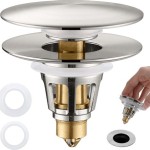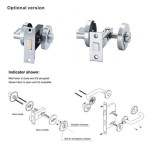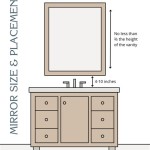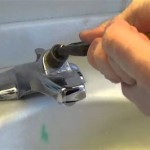How To Change Out a Bathroom Fan
Bathroom fans serve a crucial function in maintaining a healthy and comfortable environment. They remove moisture-laden air, preventing mold and mildew growth, and also help to dissipate odors. Over time, bathroom fans can become noisy, inefficient, or simply stop working altogether. Replacing an old bathroom fan with a new one is a manageable DIY project for homeowners with basic electrical and mechanical skills. This article provides a comprehensive guide on how to safely and effectively change out a bathroom fan.
Key Point: Preparation and Safety Precautions
Before starting any electrical work, safety must be the top priority. The first step is to turn off the power to the bathroom fan at the circuit breaker. Confirm the power is off by testing the fan with a non-contact voltage tester. This will ensure no electricity is flowing to the wires during the replacement process. Ignoring this step can lead to serious electric shock.
Gather all the necessary tools and materials. These include a new bathroom fan (ensure it matches the size and CFM requirements of the existing fan), a screwdriver set (both Phillips and flathead), wire strippers, wire connectors (wire nuts), a utility knife, pliers, safety glasses, gloves, a ladder or step stool, and a dust mask. A headlamp or flashlight can also be beneficial for working in the often-dim confines of the bathroom ceiling.
Read the instructions included with the new bathroom fan. Different models may have slightly different installation procedures. Familiarizing oneself with the manufacturer's recommendations before starting will ensure a smoother and more efficient installation.
Wear safety glasses and a dust mask throughout the project. Removing the old fan can create dust and debris, which can be harmful to the eyes and respiratory system. Protecting these areas is essential for maintaining a safe working environment.
Have a helper available. While the project can be completed alone, having someone assist with holding the fan, passing tools, or providing support can make the process easier and safer, especially when working on a ladder.
Key Point: Removing the Old Bathroom Fan
With the power off and the necessary safety precautions in place, the next step is to remove the old bathroom fan. Begin by removing the fan cover. Most covers are held in place by spring clips or screws. Gently pull or unscrew the cover to detach it from the fan housing. If the cover is stuck, carefully check for any screws or clips that may be holding it in place.
Disconnect the electrical wiring. Locate the wiring compartment of the old fan. Carefully remove the cover to expose the wires. Use wire strippers to disconnect the wires from the fan motor. Cap each wire with a wire connector immediately after disconnecting it. This prevents accidental contact with the live wires if the circuit breaker is mistakenly switched back on. Be sure to note the color coding of the wires (usually black for hot, white for neutral, and green or bare copper for ground) to ensure proper reconnection later.
Detach the fan housing from the ceiling. The fan housing is typically attached to the ceiling joists with screws, nails, or mounting brackets. Depending on the installation method, it may be necessary to remove screws, pry off nails, or detach the mounting brackets. Exercise caution when removing the housing to prevent it from falling. Have a helper hold the housing or use a temporary support to prevent it from dropping and potentially causing damage or injury.
If the fan is vented to the outside, disconnect the ductwork. The ductwork is typically connected to the fan housing with clamps or tape. Loosen the clamps or carefully cut the tape to detach the ductwork. Be mindful of any insulation wrapped around the ductwork and handle it carefully. Dispose of the old fan and ductwork according to local regulations.
Clean the area around the fan opening. Once the old fan is removed, clean the area around the fan opening with a vacuum cleaner or damp cloth to remove dust, debris, and any old insulation. This will provide a clean surface for installing the new fan.
Key Point: Installing the New Bathroom Fan
With the old fan removed and the area cleaned, the final step is to install the new bathroom fan. Begin by inspecting the fan housing. Ensure that it is compatible with the existing ductwork and electrical wiring. If necessary, make any adjustments to the fan housing or ductwork to ensure a proper fit.
Attach the fan housing to the ceiling. Follow the manufacturer's instructions for attaching the fan housing to the ceiling joists. Use screws or nails to secure the housing to the joists. Ensure that the housing is level and securely fastened to prevent it from vibrating or falling. If the existing mounting brackets are not compatible with the new fan housing, it may be necessary to install new brackets.
Connect the ductwork. Connect the ductwork to the fan housing using clamps or tape. Ensure that the connection is secure and airtight to prevent air leakage. If necessary, wrap the ductwork with insulation to improve its energy efficiency.
Connect the electrical wiring. Carefully connect the electrical wiring to the fan motor. Match the color coding of the wires (black to black, white to white, and green or bare copper to ground). Use wire connectors to securely connect the wires. Ensure that the wire connections are tight and properly insulated. Tuck the wires neatly into the wiring compartment and replace the cover.
Install the fan cover. Install the fan cover according to the manufacturer's instructions. Most covers are held in place by spring clips or screws. Gently push or screw the cover into place. Ensure that the cover is securely attached to the fan housing.
Test the new bathroom fan. Turn the power back on at the circuit breaker. Test the new bathroom fan to ensure that it is working properly. Check the fan speed and noise level. Listen for any unusual noises or vibrations. If the fan is not working properly, turn off the power and recheck the wiring connections.
If the fan operates correctly, ensure the vent to the outside is not blocked by debris or animals. Bird nests and other types of buildup can significantly reduce the fan's effectiveness.
Clean up the work area. Once the installation is complete, clean up the work area. Remove any tools, materials, and debris. Dispose of the old fan and packaging according to local regulations.
Replacing a bathroom fan is a straightforward project that can improve air quality and prevent moisture damage. By following these steps and taking the necessary safety precautions, homeowners can successfully change out a bathroom fan and enjoy a healthier and more comfortable bathroom environment.

Remove Install A Bathroom Fan Grille In 1 Min

Not Sure How To Remove Old Bathroom Fan Install New One Doityourself Com Community Forums

How To Replace A Bathroom Fan With Pictures Wikihow

Tips For Installing Or Replacing A Bathroom Fan Forbes Home

How To Replace Or Install An Easy Bath Fan The Home Depot

How To Remove Clean Bathroom Ceiling Fan Nutone

How To Replace Or Install An Easy Bath Fan The Home Depot

How To Replace A Bathroom Fan Motor Quick Diy Approach

How To Replace Or Repair A Bathroom Fan

How To Clean Replace Light Broan Model 678 Exhaust Fan
Related Posts







